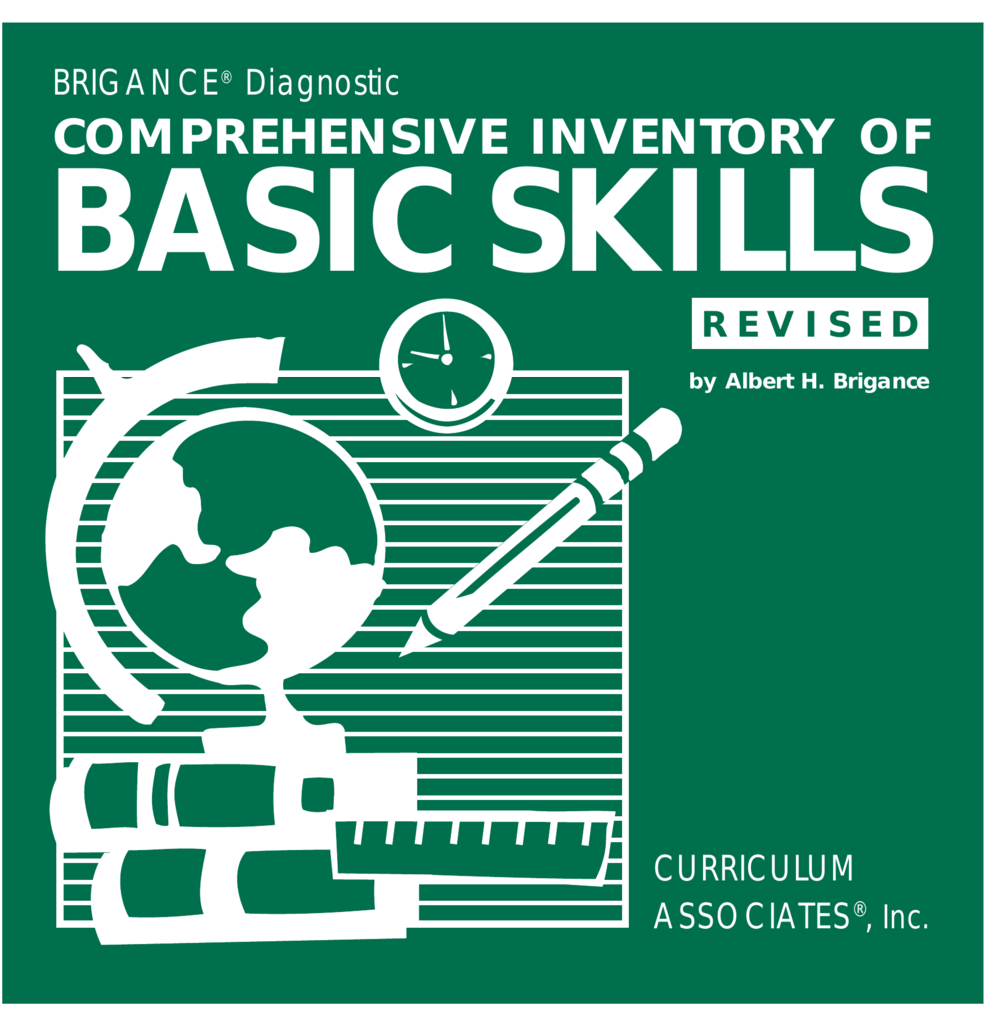The BRIGANCE Comprehensive Inventory of Basic Skills (CIBS) is a comprehensive assessment for students in grades K-9 and contains over 400 tests for reading/ELA and mathematics. The assessment is aligned with state and national standards and can be used for monitoring progress, providing ongoing assessment, and writing IEPs. The CIBS offers both criterion-referenced and norm-referenced measures.
- Brigance Standardization And Validation Manual Free
- Brigance Standardization And Validation Manual 2020
Content
Administration information
- The Brigance Inventory of Early Development III (IED-III) Standardisation and Validation Manual is the complete guide to the science underpinning this trusted developmental assessment tool and the research behind it, including the detailed, U.S.-wide sampling that took place prior to this new edition.
- The Brigance: Comprehensive Inventory of Basic Skills II (CIBS-II) Standardisation and Validation Manual offers professionals administering the Brigance CIBS-II inventory a complete insight into the research and science behind the new and updated version of this unique and wide-ranging tool.
- IED III Standardization and Validation Manual. The IED III Standardization and Validation Manual gives the history and a technical explanation of the IED III Standardized. It includes information about test administration procedures, interpretation of results, standardization methodology, and the reliability and validity of the measure.
Brigance Diagnostic Inventory Of Early Development Ii Ied Ii Standardization And Validation Manual Author: www.automationengineering.org-2021-05-15T00:00:00+00:01 Subject: Brigance Diagnostic Inventory Of Early Development Ii Ied Ii Standardization And Validation Manual Keywords.

Access and Use
Shamir, H., Miner, C., Izzo, A., Pocklington, D., Feehan, K. & Yoder, E. (2018). Preparing Students to Kindergarten Using UPSTART at Home. Journal of Educational Multimedia and Hypermedia, 27(2), 209-230. Waynesville, NC USA: Association for the Advancement of Computing in Education (AACE). Retrieved December 20, 2018 from https://www.learntechlib.org/primary/p/178522/.
Psychometrics
Brigance Standardization And Validation Manual Free
French, B., & Glascoe, F. P. (n.d.). BRIGANCE Comprehensive Inventory of Basic Skills II Standardization and Validation Manual. Curriculum Associates LLC. Retrieved from http://www.casamples.com/downloads/11829s.pdf
Breidenbach, D. H. (2009). A Factor Analytic Study of the Internal Structure of the BRIGANCE Comprehensive Inventory of Basic Skills-II. Washington State University. Retrieved from http://citeseerx.ist.psu.edu/viewdoc/download?doi=10.1.1.632.5991&rep=r…
Brigance Standardization And Validation Manual 2020
IED III Standardized and IED III Standardized Record Book
The Inventory of Early Development III Standardized consists of 55 norm-referenced assessments that allow educators to compare a child’s performance to that of same-age children in a nationally representative sample. Assessments cover a broad array of skills and behaviors in these key early learning and development domains:
- Physical development (gross motor and fine motor)
- Language development (receptive and expressive)
- Academic skills/cognitive development (literacy and mathematics)
- Adaptive behavior (daily living)
- Social and emotional development (interpersonal and self-regulatory)
The IED III Standardized is intended for use with children ages 0–7 and provides normative scores such as standard scores, percentile ranks, and age equivalents for children of these ages. Educators commonly use these scores, when indicated, to endorse a child’s eligibility for services. Examiners use one IED III Standardized Record Book per child for recording assessment results.